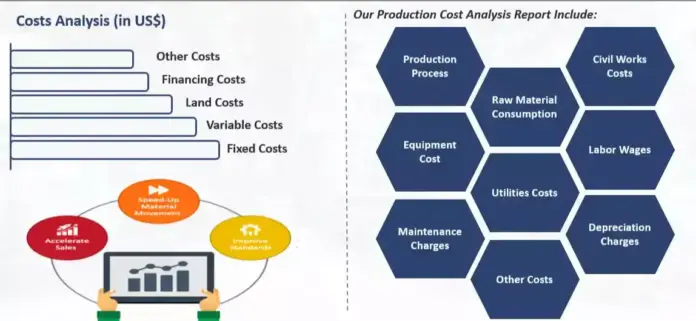Welcome to the world of Lettuce Production Cost, where meticulous care and attention to detail result in crisp, fresh leaves that grace our plates. In this comprehensive guide, we will delve into the intricacies of Cost of lettuce Production, exploring key factors that influence expenses and unveiling strategies for optimizing efficiency and profitability in lettuce farming.
Definition of Lettuce Production
Lettuce production involves the cultivation of various lettuce varieties, including romaine, iceberg, butterhead, and leaf lettuce, for commercial purposes. The process encompasses land preparation, seed selection, planting, irrigation, pest management, harvesting, and packaging, all aimed at delivering high-quality lettuce to market.
Key Details About Lettuce Production Costs
1. **Land Preparation:** Lettuce cultivation begins with land preparation, including soil testing, tilling, and bed formation. The cost of land preparation varies depending on factors such as soil quality, field size, and equipment usage.
2. **Seed Procurement:** Selecting high-quality lettuce seeds is essential for a successful harvest. Seed costs can vary based on variety, seed treatment, and supplier, with options ranging from conventional to organic seeds.
3. **Irrigation and Water Management:** Lettuce requires consistent moisture levels to thrive, making irrigation a critical component of production. Expenses related to irrigation systems, water pumps, and water usage impact overall production costs.
4. **Fertilization and Nutrient Management:** Proper fertilization is essential for supplying essential nutrients to lettuce plants. Costs associated with fertilizers, soil amendments, and nutrient management programs contribute to production expenses.
5. **Pest and Disease Control:** Protecting lettuce crops from pests and diseases is crucial for preventing yield losses. Expenses related to pest scouting, insecticides, fungicides, and biological controls impact production costs.
6. **Labor Costs:** Labor expenses encompass wages, benefits, and labor hours required for various tasks, including planting, weeding, watering, harvesting, and packing. Labor costs vary based on labor availability, wage rates, and seasonality.
7. **Harvesting and Packaging:** Harvesting lettuce involves labor-intensive activities, including cutting, sorting, washing, and packaging. Expenses related to labor, packaging materials, and post-harvest handling impact production costs.
Request Free Sample – https://www.procurementresource.com/production-cost-report-store/lettuce/request-sample
Efficiency Strategies for Lettuce Production:
1. **Crop Rotation and Companion Planting:** Implementing crop rotation with legumes or cover crops helps improve soil health, reduce pest pressure, and minimize fertilizer requirements, leading to cost savings and increased yields.
2. **Precision Irrigation:** Utilizing drip irrigation or micro-sprinkler systems ensures precise water delivery to lettuce plants, minimizing water waste and reducing irrigation costs.
3. **Integrated Pest Management (IPM):** Adopting IPM practices, such as biological controls, habitat manipulation, and crop monitoring, reduces reliance on chemical pesticides, lowers input costs, and promotes ecological sustainability.
4. **Mechanization:** Investing in mechanized lettuce harvesting equipment, such as lettuce harvesters and automated packing systems, increases harvesting efficiency, reduces labor dependency, and lowers harvesting costs.
5. **Variety Selection:** Choosing lettuce varieties adapted to local growing conditions and market preferences improves yield potential, reduces input requirements, and enhances profitability.
Conclusion
In conclusion, understanding lettuce production costs and implementing efficiency strategies are essential for lettuce growers to achieve success in the competitive agricultural market. By carefully managing expenses, optimizing resource use, and embracing sustainable practices, growers can enhance profitability, improve crop resilience, and ensure a steady supply of high-quality lettuce to meet consumer demand. Continuous innovation, adaptation to changing market dynamics, and collaboration across the lettuce supply chain are key to achieving long-term sustainability and profitability in lettuce production.


















![InstaPro APK Download Latest Version 2023 [Anti Ban]](https://olo.my.id/wp-content/uploads/2023/10/instapro-100x70.jpg)

